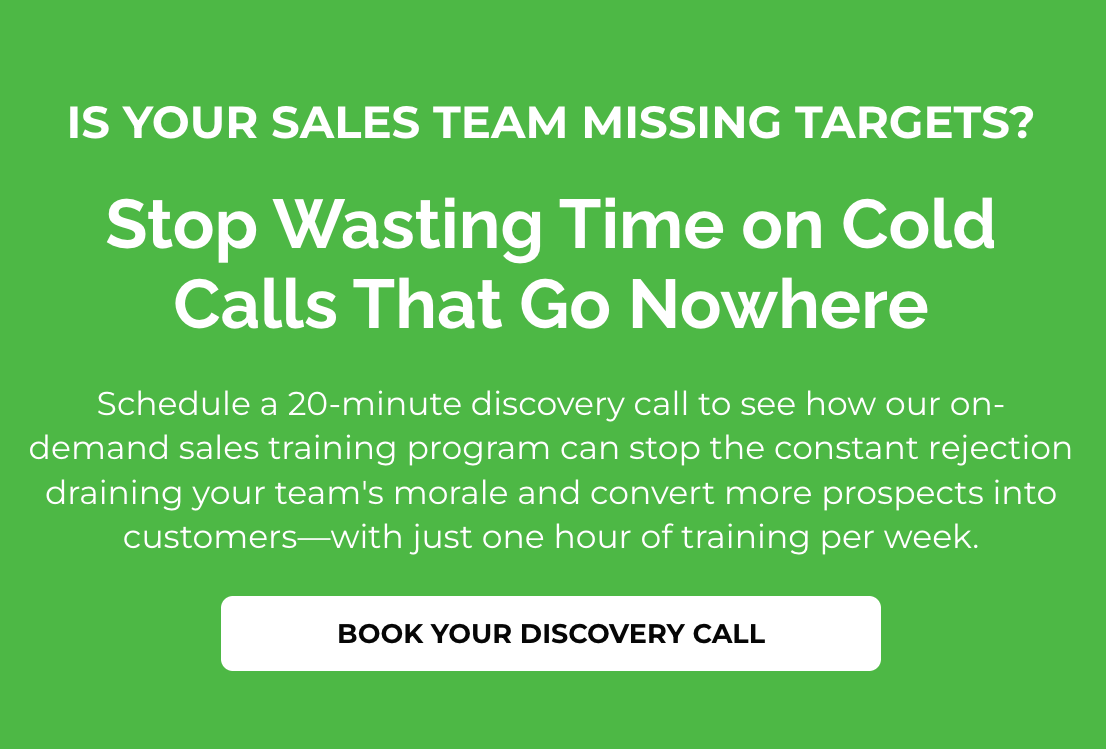Cold Calling Vs. Warm Calling

Cold Calling Vs. Warm Calling
I’m a commission-only sales rep who mastered cold-calling over the past 25+ years.
Part of my successful cold calling strategy is to:
- Call
- Leave a voicemail (if I don’t get the prospect on the phone)
- And then send an email.
One of the most common email responses I get from potential prospects is:
“We don’t do any cold calling.”
This response has always raised my suspicions. It doesn’t seem practical.
So here is how I usually proceed from there:
I pick up the phone and call the prospect immediately.
If they answer, I say something along the lines of:
“Hey (Prospect name), it’s Michael w/SalesBuzz.com – thank you for your quick email reply. There’s a strong possibility I may be able to help your sales team 3X their close rate on warm leads as well, but I would need to ask you a few questions first to be sure. Would that be OK?”
Note: When I call, if I get voicemail again, I will leave a version of the above as my voicemail message AND will reply to their email with said message above.
Cold Calling Vs. Warm Calling
Once I get the prospect on the phone and start the sales conversation, 90% of the time, it turns out that the prospect’s team DOES make cold calls, but the sales leader doesn’t realize it.
- If you call existing accounts, but that account is NOT raising their hand now, it’s a COLD CALL.
- If you call your clients and ask for referrals, when you call the leads your client gives you, it’s a COLD CALL. (Only inbound referrals are warm)
- If you research a prospect before calling them, it’s a cold call.
Warm calls are when you are contacting a prospect/lead that in one way or another, raised their hand (inbound leads)
Whether the call is warm or cold, most sales reps who struggle to hit quota are not properly trained on what to say once the conversation starts. And what is worse, most sales reps don’t know that they don’t know.
Here’s excellent news:
All cold and warm calls should be handled the same way.
Here’s what I mean:
Sales calls are a lot like playing baseball.
You are in the batter’s box whenever you pick up the phone.
Your objective is to get to first base first.
Cold or warm, you must know how to pique your prospect’s interest in the first few seconds of the call, or nothing else matters. Once you learn how to create a customized opening value statement that works, you will find getting prospects to take your call the easy part.
The next step is where most sales reps go wrong. They don’t know how to get to second base – they often don’t even know what second base is, let alone how to get there.
Case in point:
Today, I was the warm lead. I booked a call to learn more about a service I am interested in for my business.
Once the call started, the rep launched into the presentation. That is the equivalent of running from first base and across the pitcher’s mound to third base.
She totally missed second base.
What is second base in sales, whether you are cold or warm calling?
It’s called QUALIFYING.
Qualifying means:
- You’ve identified the pain point.
- The prospect’s role in the decision-making process
- Time Frame
- What does their ideal solution look like/what’s most important to them
- Price range
There is literally a step-by-step sequence of questions that a salesperson can ask that will engage the prospect in conversation and collect the necessary info to increase your chances of closing the deal sooner rather than later, and that sequence/process is the same for cold and warm calls.
Learn and master those steps; your fear of cold calls will evaporate, and your commission checks will grow!

